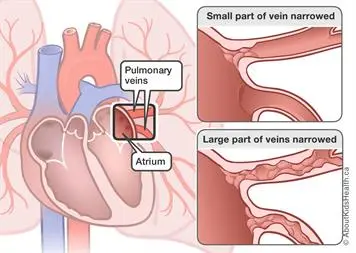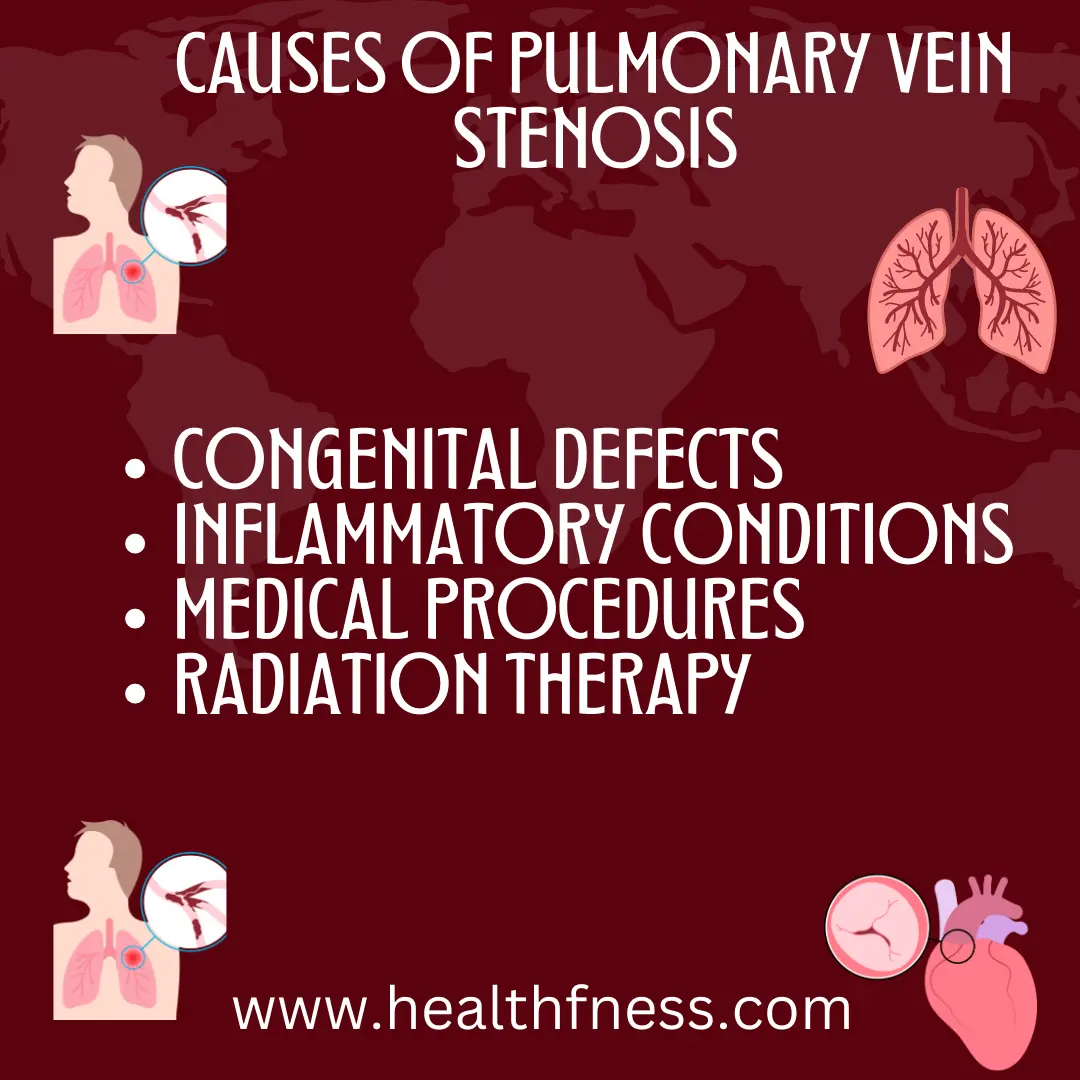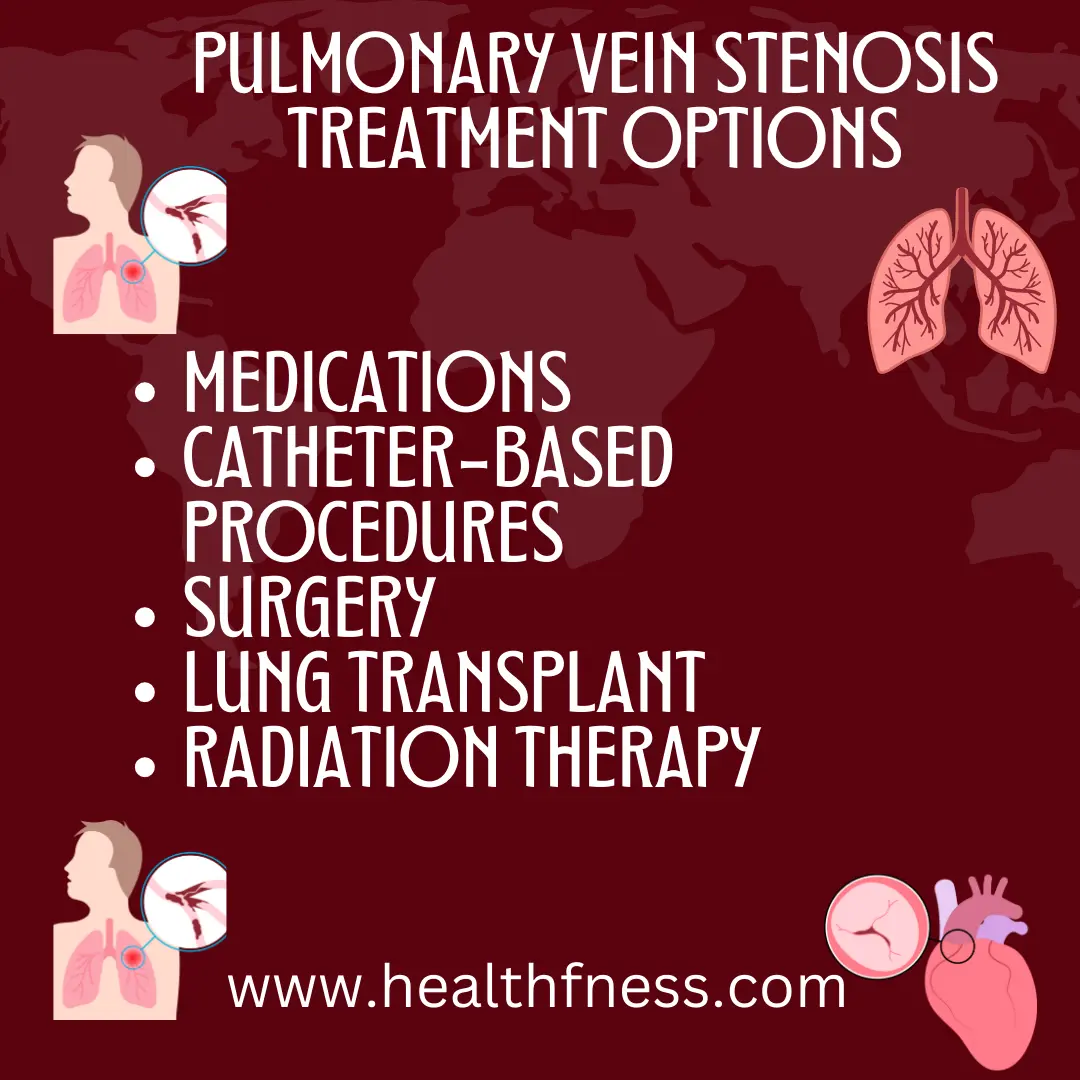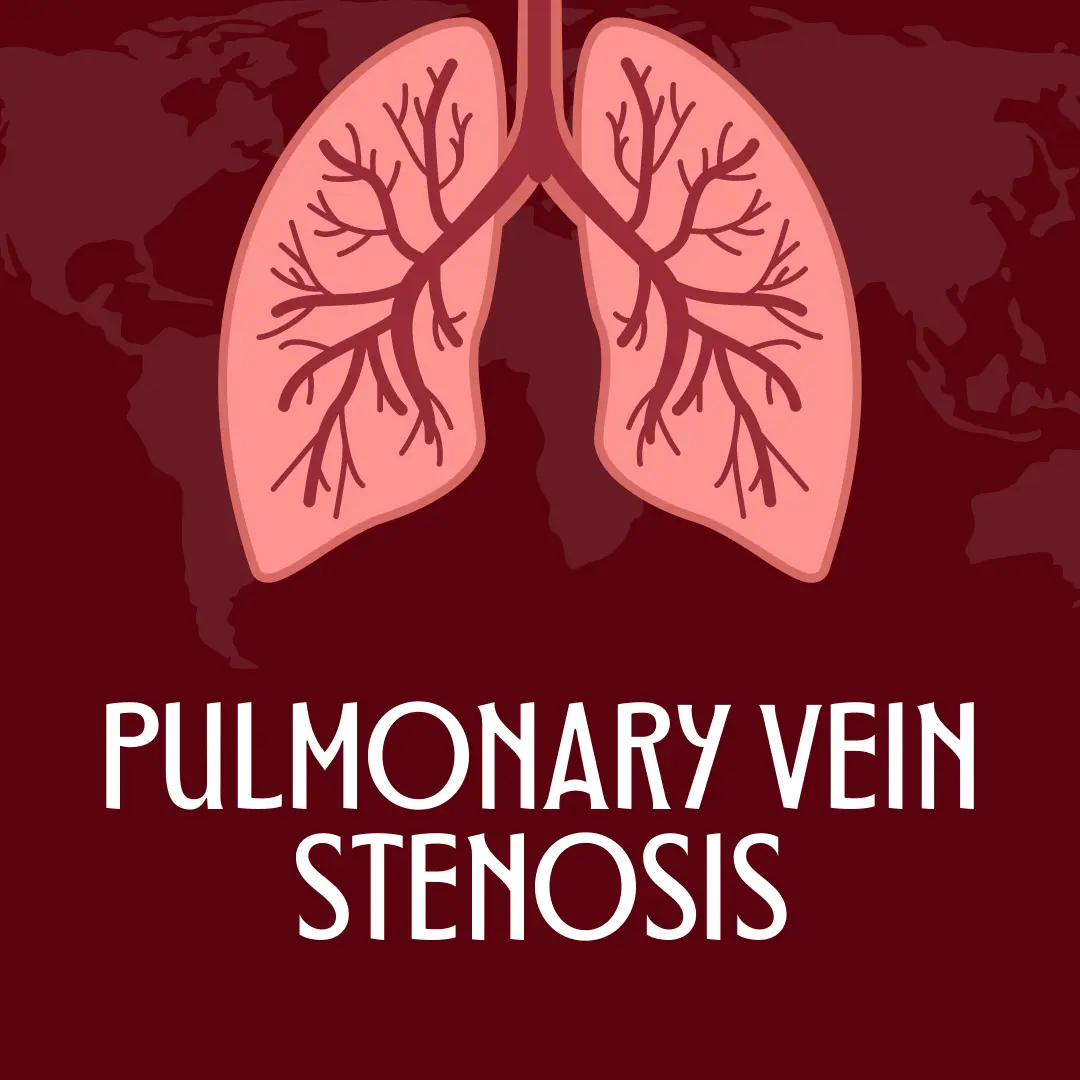Pulmonary vein stenosis 🫁💔🩺 is a rare disease which means it’s not common among people very few people face this condition. In this condition pulmonary veins, whose duty is to carry blood that is rich in oxygen from the lungs to the heart, become narrow and tight.

What Are The Types Of Pulmonary Vein Stenosis?
It can be divided into two main types for better understanding briefly describe both of these types below:
Congenital Pulmonary Vein Stenosis
In this type when the pulmonary veins do not develop properly before birth. This may be due to genetic factors or other unknown causes there is no certain reason figured out yet. Congenital pulmonary vein stenosis is more common in children than in adults.
Acquired Pulmonary Vein Stenosis
In this type Pulmonary vein stenosis can develop later in life a person not having this problem by birth. There are a lot of factors like inflammation and scarring that consider for the development of this type of Pulmonary vein stenosis.
Causes Of Pulmonary Vein Stenosis
The exact cause of this disorder is unknown but by research here are some causes which is list down:
Congenital Defects
Pulmonary vein stenosis can occur due to improper development of Pulmonary veins before birth this can occur due to genetic factors.
Inflammatory Conditions
Due to inflammation in the veins Pulmonary vein becomes narrow or blocked and this lead to this disorder. Autoimmune illnesses or ailments like vasculitis may be to blame for this.

Medical Procedures
Some medical procedures also play role in developing this disease by narrowing veins such as lung transplant surgery or cardiac surgery, which can increase the risk of developing pulmonary vein stenosis.
Radiation Therapy
Radiation therapy is done to cure a certain type of cancer but it can harm the veins and tighten them and leading to this condition.
There is also some other condition which also can be a reason for this disease like pulmonary hypertension or congenital heart disease.
You May Also Like To Read: Peritubular Capillaries: Structure, Function, and Regulation 2023
Pulmonary Vein Stenosis Symptoms
It’s very important to know about symptoms so one’s can identify that he or she has this disorder. But symptoms may vary from one person to another due to the level of disease and whether it is congenital or acquired
Shortness Of Breath
Difficulty in breathing during any physical activity like running playing and walking fast is a common sign of this disorder.
Fatigue
Feeling tired after taking rest according to body needs is another sign of this condition.
Chest Pain
Pain in the chest during physical activity like exercise, cycling running also consider a symptom of this condition.
Coughing
Another alarming symptom is prolonged coughing and also blood in the cough.
Bluish skin or lips
If someone has bluish skin or lips it also considers a sign of low oxygen levels in the body and it can be due to Pulmonary vein stenosis
Rapid heartbeat
An excessively fast heartbeat and palpitations are also a sign of this disease.
Swelling
If someone feels swelling in the legs and feet it can also occur due to this disorder.
You May Also Like To Read: Iron Deficiency Anemia ICD 10: Unpacking Iron Deficiency Anemia
Pulmonary Vein Stenosis Diagnosis💉💊🏥
After discussing the symptoms of Pulmonary vein stenosis the steps come of diagnosis of this disorder. The steps include in diagnoses:
Medical history and physical examination
The doctor will ask about your past medical history or diseases and also ask about symptoms you feel after that do a physical examination.
Echocardiogram
This is a test that uses sound waves of the heart to create images of the heart and if there is any abnormality in the beating of the heart doctors identify it by this test.
Cardiac Catheterization
In this technique, the catheter is injected into the blood vein to check blood pressure levels and measure blood flow. It also helps to identify if someone has this disorder or not.
Pulmonary Vein Angiography
In this procedure, a color injection is given in the pulmonary vein to detect any abnormalities shown in the visualization, and the doctor easily identifies the issue.
Biopsy
If all methods are not enough to identify the disorder then in some cases biopsy is also done in this procedure small tissue sample is taken from the veins and tests this tissue.

Pulmonary Vein Stenosis Treatments
There is numerous treatment available for this disease include:
Medications
The most common method for curing this disorder is medications. To treat symptoms, doctors may give medications like diuretics, anticoagulants, and blood pressure meds. But don’t try this medicine before taking advice from a doctor.
Catheter-Based Procedures
In some situations, medical professionals might enlarge or fix the damaged pulmonary veins using a catheter-based treatment.
Surgery
Surgical interventions may be necessary in cases where catheter-based procedures are not effective. Surgery may involve removing or repairing the affected pulmonary veins.
Lung Transplant
A lung transplant may be required in extreme situations of pulmonary vein stenosis to replace the damaged lung tissue.
Radiation Therapy
Radiation therapy may be used to treat pulmonary vein stenosis, which is brought on by scarring or other damage to the pulmonary veins.
The aim of treatment is to improve blood flow and enlarge and tighten veins so a person can continue their normal life.
You May Also Like To Read: Does Tylenol Affect Blood Sugar?
Lifestyle Changes To Manage Pulmonary Vein Stenosis Symptoms
| Lifestyle Changes | Description |
|---|---|
| Quitting smoking | Smoking worsens pulmonary vein stenosis symptoms and increases risks. Giving it up improves lung function and overall health. |
| Managing Stress | Stress elevates heart rate and blood pressure, worsening symptoms. Stress reduction techniques like meditation or yoga can help manage it. |
| Avoiding high altitudes | High altitudes reduce blood oxygen levels, exacerbating symptoms. Avoiding them or using supplemental oxygen may be advised. |
| Get Enough Rest | Fatigue is common; sufficient rest, aiming for 7-8 hours of sleep nightly, can help manage symptoms. |
| Home Remedies | Description |
|---|---|
| Saltwater Gargle | Gargling with warm salt water eases throat irritation and coughing, promoting comfort and faster recovery from pulmonary vein stenosis. |
| Avoid Triggers | Avoid smoking, pollution, and allergens to prevent worsening of symptoms associated with pulmonary vein stenosis. |
| Stay Hydrated | Drinking plenty of water thins mucus, making it easier to expel. Adequate hydration positively impacts health, aiding in managing pulmonary vein stenosis symptoms.
|
Pulmonary Vein Stenosis Life Expectancy
The life expectancy for individuals depends upon many factors like the health level of people how they use medicines their daily diet at much more. In some cases, pulmonary vein stenosis can be cured with medications, catheter-based procedures, or surgery, and a person is able to live a normal life or near-to-normal life.
FAQS.
How long can you live with pulmonary vein stenosis?
The severity of the condition, the underlying cause, and how well it responds to treatment all affect how long someone with pulmonary vein stenosis will live.
What pulmonary vein stenosis symptoms are typical?
Breathlessness, exhaustion, coughing, chest pain, and a rapid heartbeat are all signs of pulmonary vein stenosis. Symptoms in newborns and young children may include respiratory discomfort, low weight gain, and trouble eating.
Conclusion
Pulmonary vein stenosis is a condition in which pulmonary veins are tightened than their normal size. Two types of this disorder are Congenital Pulmonary Vein Stenosis and Acquired Pulmonary Vein Stenosis. There are several causes of pulmonary vein stenosis inflammatory conditions, and medical procedures. And symptoms of this disease are fatigue, chest pain, bluish skin or lips, etc. Diagnosis of the disorder includes medical history, Caric Catheterization. Several treatment options are available according to patient needs. Lifestyle changes are also needed for better recovery.
If you have any confusion or questions related to this topic do Let Us Know😊
Video Credits:
Neonatal Hemodynamics Research Centre
Image Credits:

